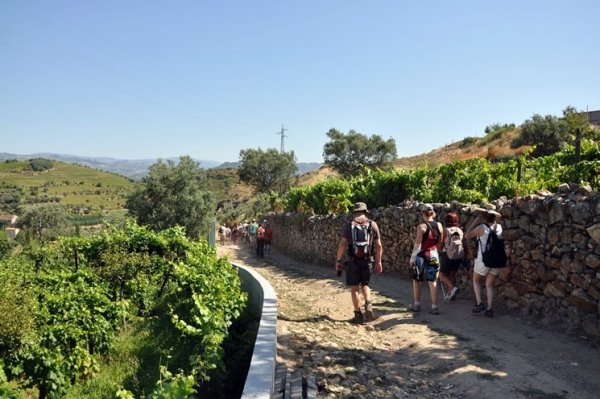Tours
Way of St. James
Interior Portuguese Way of Santiago
The Way of Saint James, in its various derivations, have been, since the Middle Ages, pilgrimage routes, not only religious, but also cultural, tourist and economic, for serving as a means of communication, but also as means of spreading identity of the various places they cross.
After centuries of oblivion, the Inner Portuguese Way of Santiago was recovered, thanks to the effort and joint work of the eight municipalities of the interior of Portugal, crossed by its route: Viseu, Castro Daire, Lamego, Peso da Régua, Santa Marta de Penaguião , Vila Real, Vila Pouca de Aguiar and Chaves.
In Portuguese territory, there are about 205 kilometers of breathtaking landscapes, of contact with a patrimonial legacy of undeniable value and beauty. In Spain, entering by Verim, it connects, later, to Via de la Plata, and finally to Santiago de Compostela.
The gateway to Lamego is by Bigorne, where you can spend the night in the hostel and leave a donation to help with its maintenance. A visit to the shrine of Nossa Senhora dos Remédios and its monumental staircase, with more than 650 steps, or even to the Cathedral and the Lamego Museum, in the center of the city, is a must. it is also suggested a visit to the Church of Santa Maria Maior de Almacave.
There are many heritage, cultural and scenic points of interest in this county in the Douro Demarcated Region. You can also enjoy and regain strength by sampling the Bôla de Lamego and drinking a glass of Douro Wine or Sparkling wine.

PEDESTRIAN PATHWAYS
The Municipality of Lamego benefits from six small route (PR) routes, which cover the whole municipality involving natural and rural urban environments.
The routes, which are signposted according to the international hiker rules, can be carried out without the use of a specialized guide, as they have a folding topoguia that contains the technical file of the same, the cartography, the regulation, the profile altimétrico and a brief description of the visible, natural and cultural patrimony, along the rail, being available in the site of the Municipal Council of Lamego.
Walking route of Serra das Meadas,
It begins in the city of Lamego involving and reporting the hiker to the Roman period and to the conquest of Lamego to the Moors by Fernando Magno in 1057. This has an essentially cultural and historical aspect, not discoloring the vast geomorphological heritage.
Route of the Port Wine,
It covers an area of vineyard that over the centuries has been shaped by Man, to extract the best nectar from the land, the famous Port Wine, once known as wine "smelling of Lamego." As we walk along this path we come across several sunny houses, which prove the vast and important cultural heritage of the parish of Samodães, classified by UNESCO as World Heritage since 2001.
Land route of D. Pedro Afonso,
It is characterized by the stunning wild landscapes of Lazarim, Lalim, Melcões and Meijinhos, which were once the scene of the love of D. Pedro.
Route of the Anta de Mazes,
It is all rural and tourist, because it has in its pleasant landscape the cultivated fields and the village called Aldeia de Antas, which involves a cluster of rustic houses with thatched roofs, once made by shepherds.
Walking tour of Balsemão,
Where the banks of the river Varosa embellish the geological and natural architecture, being able to make the bird observation. During the tour is the famous "Audience Hall of the Devil" mentioned in the Roadmap of Pina de Morais, illustrious lamecense, native of the parish of Valdigem.
Course of the "Masks of Lazarim",
The hiker, besides contacting one of the most imposing cultural and peculiar paths in the region, has the opportunity to enjoy one of the most beautiful carnivals, if not the most genuine of Portugal, known as the "Ludoin", famous for the masks made of alder, where traditions are preserved in time.
 EN
EN  PT
PT ES
ES FR
FR